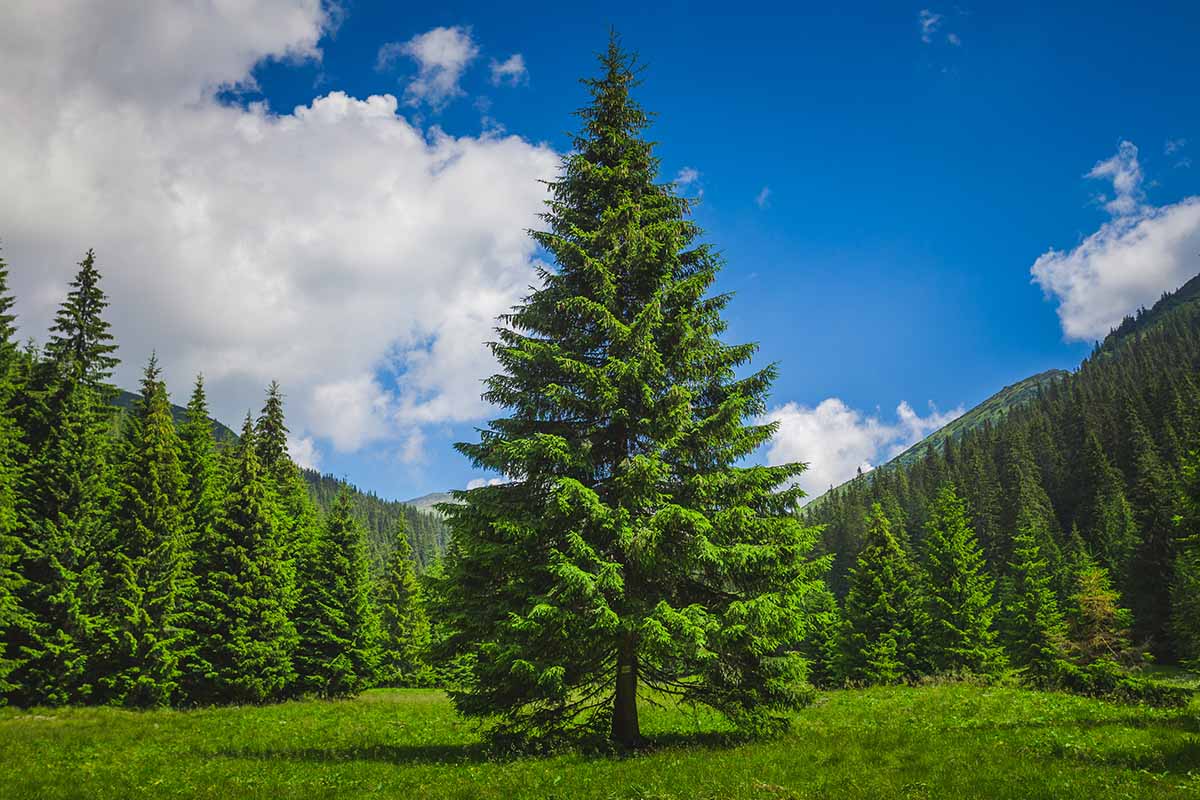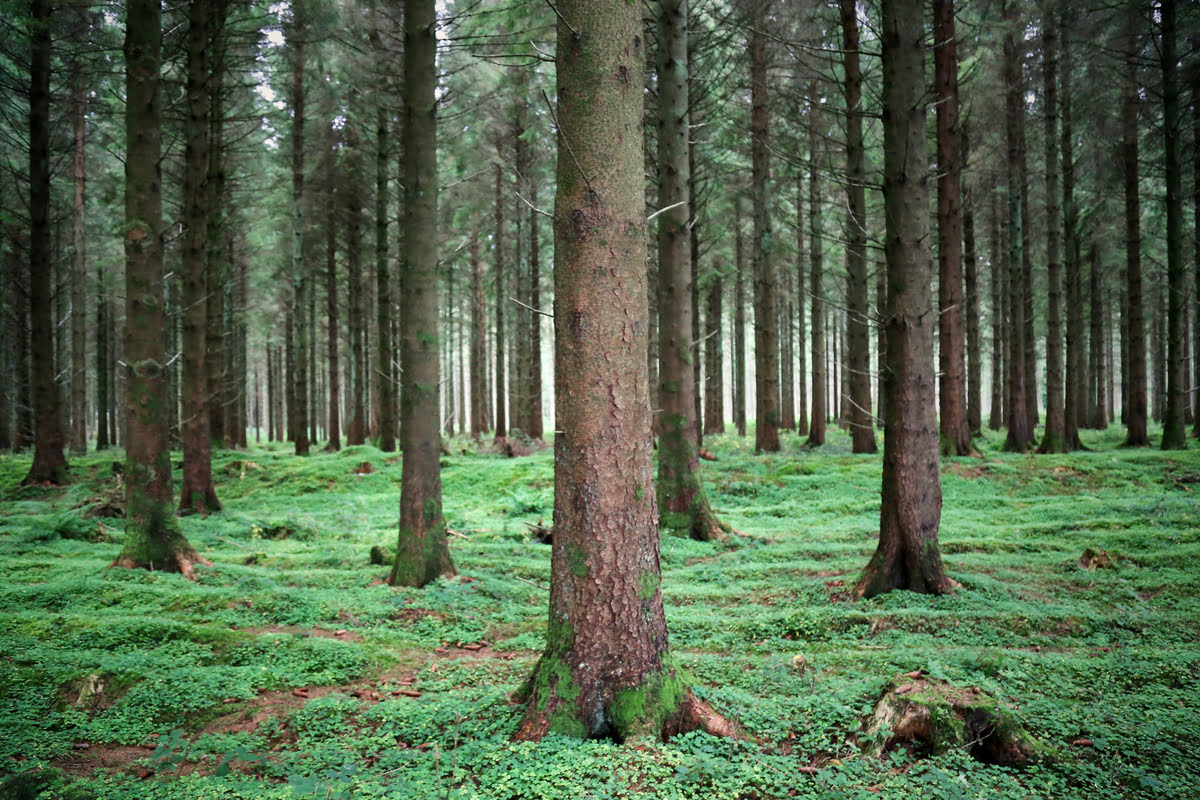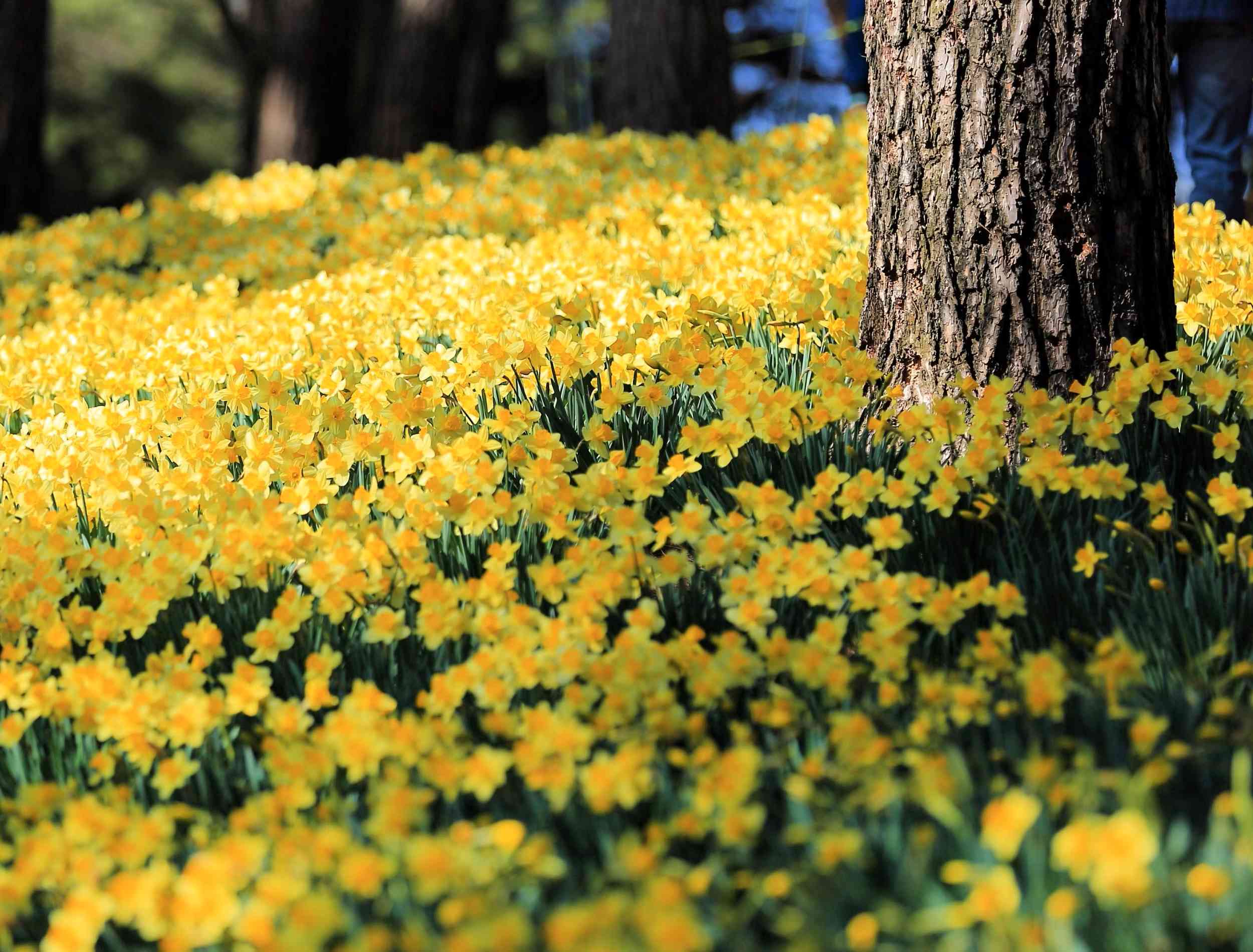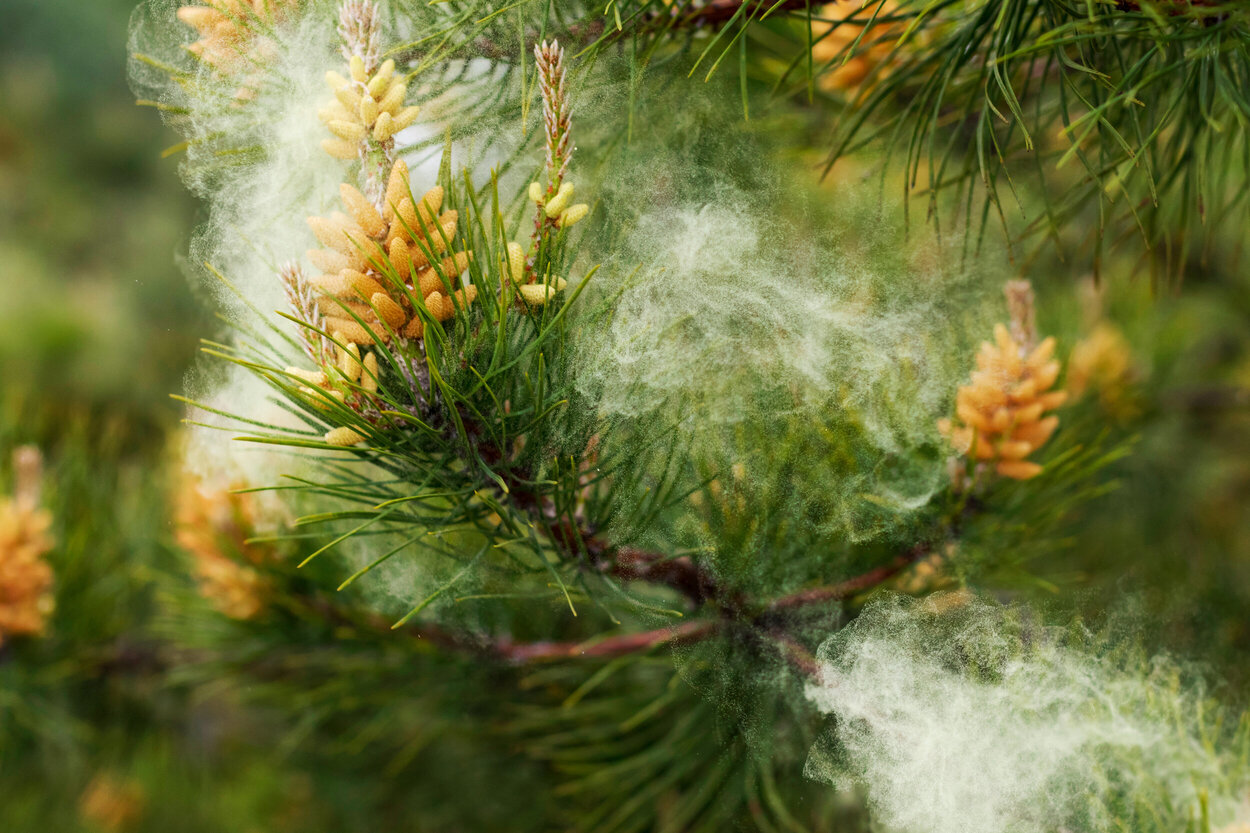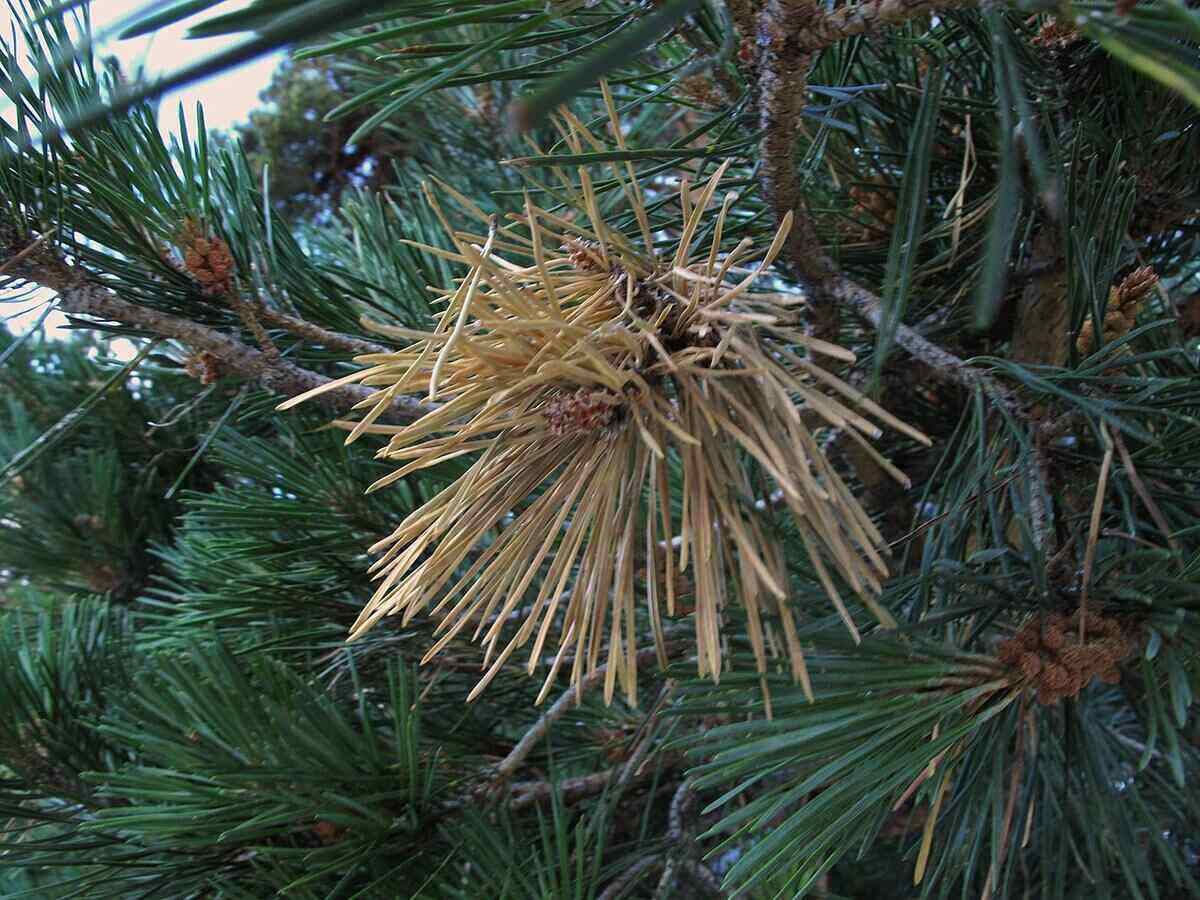Home>Gardening Techniques>Plant Care>How To Plant Pine Trees
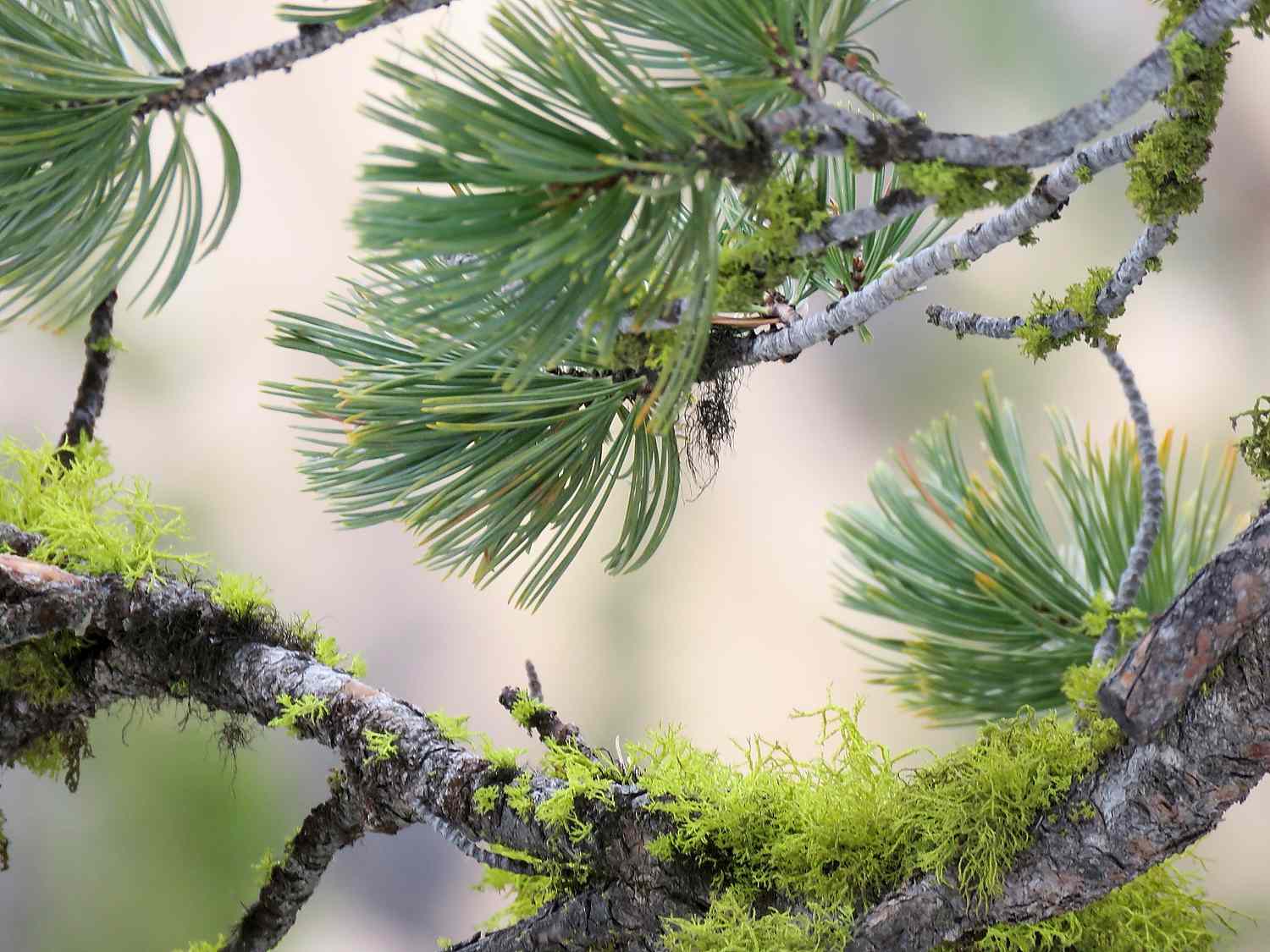

Plant Care
How To Plant Pine Trees
Modified: January 22, 2024
Learn how to plant pine trees and provide proper plant care for healthy growth and longevity. Get expert tips and techniques for successful tree planting.
(Many of the links in this article redirect to a specific reviewed product. Your purchase of these products through affiliate links helps to generate commission for Chicagolandgardening.com, at no extra cost. Learn more)
Table of Contents
Introduction
Welcome to the world of plant care! If you’re a plant enthusiast or just starting your gardening journey, understanding how to properly care for your plants is essential. In this article, we will focus on one specific aspect of plant care: planting and caring for pine trees.
Pine trees are a beautiful addition to any landscape, with their tall, majestic stature and distinct evergreen needles. They provide shade, privacy, and a touch of natural beauty that can transform any outdoor space. However, planting and maintaining pine trees require attention to detail and proper techniques to ensure their health and longevity.
In the following sections, we will guide you through the process of selecting the right pine trees, choosing the ideal planting location, preparing the planting area, digging the planting hole, and effectively planting the tree. We will also cover watering, mulching, pruning, and general maintenance tips to help you keep your pine trees thriving for years to come.
Whether you’re planning to add a couple of pine trees to your backyard or embarking on a larger reforestation project, this article will equip you with the knowledge to make informed decisions and take appropriate actions for the health and well-being of your pine trees.
So, let’s dive into the world of pine tree planting and care, and get ready to enhance the beauty of your outdoor space with these magnificent evergreen wonders!
Selecting the Right Pine Trees
When it comes to selecting the right pine trees for your landscape, there are several factors to consider. Different varieties of pine trees have different growth habits and environmental preferences, so it’s important to choose ones that are well-suited to your specific location. Here are some key points to keep in mind:
- Climate and Hardiness: Pine trees have varying degrees of cold and heat tolerance. Before selecting a pine tree, check its hardiness zone rating to ensure it can thrive in your climate. Additionally, consider the average rainfall in your area, as some pine tree species prefer moist conditions while others are more drought-tolerant.
- Size and Growth Rate: Pine trees come in a wide range of sizes, from small shrubs to towering giants. Consider the available space in your landscape and choose a tree that will fit and complement the overall aesthetic. Also, be mindful of the tree’s growth rate, as some varieties grow much faster than others.
- Landscape Purpose: Decide the purpose you want the pine trees to serve. Are you looking for shade, privacy screening, windbreaks, or simply ornamental beauty? Different pine tree species have diverse characteristics that can fulfill specific landscape needs.
- Soil Conditions: Pine trees generally prefer well-drained soil with a slightly acidic pH. Before planting, test your soil and make any necessary amendments to create optimal conditions for the selected pine tree species. If you have heavy clay soil, consider choosing a pine tree that is known for its tolerance to such conditions.
- Aesthetics: Lastly, consider the aesthetic qualities of the pine tree. Look at its needle color, cone shape, and overall appearance to ensure it aligns with your desired landscape design.
By carefully considering these factors, you can select the right pine trees that will thrive in your specific environment and meet your landscaping goals. Once you’ve chosen the perfect pine trees, it’s time to move on to the next step: selecting the ideal planting location.
Choosing the Planting Location
The success and health of your pine trees heavily depend on selecting the right planting location. Here are some important considerations to keep in mind when choosing where to plant your pine trees:
- Sunlight: Most pine trees thrive in full sun conditions, so choose a location that receives at least 6 to 8 hours of direct sunlight each day. Avoid planting in areas with excessive shade, as this can hinder growth and overall tree health.
- Spacing: Take into account the mature size of the pine trees you’ve selected and ensure that you provide enough space for them to grow. Avoid planting too close to structures, power lines, or other trees, as this can cause overcrowding and potential damage in the future.
- Soil Drainage: Pine trees prefer well-drained soil to prevent root rot and other fungal diseases. Avoid areas with poor drainage or areas where water tends to accumulate, as this can suffocate the roots of the tree. If you have heavy clay soil, consider amending it with organic matter to improve drainage.
- Wind Exposure: Take note of the prevailing wind patterns in your area. Planting pine trees in locations that provide some wind protection, such as near fences, walls, or existing trees, can help reduce the risk of wind damage and promote healthy growth.
- Proximity to Structures: Consider the proximity of your pine trees to structures like houses, driveways, and sidewalks. Avoid planting too close to these structures to prevent any potential damage from the tree’s roots or falling branches as the tree matures.
- Visual Appeal: Lastly, think about the overall aesthetic impact of the pine trees in your chosen location. Consider how they will enhance the beauty of your landscape and complement other plants or landscaping features in the area.
By selecting a planting location that meets these criteria, you are providing an optimal environment for your pine trees to grow and thrive. Once you have determined the right location, it’s time to prepare the planting area for your pine tree’s new home.
Preparing the Planting Area
Before you start planting your pine tree, it’s essential to properly prepare the planting area to give your tree the best possible start. Follow these steps to ensure optimal conditions for growth:
- Clear the Area: Remove any grass, weeds, rocks, or debris from the planting area. These can compete with the tree for nutrients and water and hinder its growth.
- Amend the Soil: Test the soil in the planting area to determine its pH level and nutrient content. Most pine trees prefer slightly acidic soil with a pH of 5.5 to 6.5. If the soil is too alkaline, you may need to amend it with organic matter like peat moss or compost to adjust the pH level.
- Loosen the Soil: Use a garden fork or a tiller to loosen the soil in the planting area. This will improve the soil’s structure, allowing the tree’s roots to penetrate and spread easily. Loosening the soil also aids in water drainage, preventing waterlogged conditions that can harm the tree.
- Remove Competing Roots: Check for any nearby trees or shrubs whose roots may interfere with your pine tree’s root system. Remove or trim back any roots that could compete for resources with your new tree.
- Consider Soil Retention: If you are planting on a slope, it’s crucial to consider soil erosion prevention. Install erosion control measures, such as a retaining wall or mulch, to retain soil and prevent erosion around the planting area. This ensures that the tree’s roots have stable soil to anchor into.
By taking the time to properly prepare the planting area, you create an ideal environment for your pine tree to establish strong roots and thrive. The next step is to dig the planting hole, which we will discuss in the following section.
Digging the Planting Hole
When it comes to planting a pine tree, digging the right-sized planting hole is crucial for the tree’s long-term health and growth. Follow these steps to ensure you create an ideal planting hole:
- Measure the Root Ball: Measure the width and height of the root ball of your pine tree. The diameter of the planting hole should be two to three times wider than the root ball to provide enough space for the roots to spread out.
- Depth of the Hole: The depth of the planting hole should be equal to the height of the root ball. Avoid digging the hole too deep, as this can cause the tree to settle too low in the ground.
- Sloping Sides: To allow for proper root growth and water drainage, slope the sides of the planting hole outward. This will prevent the roots from being confined within the hole and promote outward root growth.
- Break up the Sides and Bottom: Use a fork or a shovel to break up the sides and bottom of the planting hole. This helps loosen the soil and encourages the roots to penetrate easily.
- Retaining Soil: As you dig, set aside the topsoil separately from the subsoil. You will use the topsoil later to backfill the hole, as it contains valuable nutrients that promote healthy growth.
- Inspect the Hole: Take a moment to inspect the planting hole and make sure there are no obstructions, such as rocks or roots, that could hinder root growth.
Once you have finished digging the planting hole, you’re ready to move on to the exciting part: planting the pine tree!
Planting the Pine Tree
Now that you have prepared the planting hole, it’s time to plant your pine tree! Follow these steps to ensure successful planting:
- Inspect the Tree: Before planting, carefully inspect the roots and branches of the tree. Trim any broken or damaged roots, and remove any dead or diseased branches.
- Positioning the Tree: Place the pine tree in the center of the planting hole, ensuring that it is upright and at the desired height. The top of the root ball should be level with the surrounding ground. Adjust the tree’s position as needed.
- Backfill with Topsoil: Begin backfilling the planting hole with the topsoil that was set aside earlier. Gently pack the soil around the roots, being careful not to damage or compact them. Ensure that there are no air pockets in the soil as you backfill.
- Watering: After backfilling, thoroughly water the newly planted tree. This helps settle the soil and promotes root establishment. Continue to water regularly during the first year after planting, keeping the soil consistently moist but not waterlogged.
- Mulching: Apply a layer of organic mulch, such as wood chips or bark, around the base of the tree. This helps retain moisture, suppresses weed growth, and insulates the roots from extreme temperatures.
- Staking (if necessary): If your pine tree is tall or located in a windy area, it may benefit from staking. Place two or three stakes around the tree and secure it with tree ties. Make sure the ties are loose enough to allow for some movement, promoting stronger trunk development.
Remember to avoid planting the tree too deep or burying the root flare (the area where the trunk begins to flare out into the roots). This can lead to poor root development and potential tree health issues.
Once you have planted your pine tree, the next step is to provide proper care and maintenance to ensure its long-term health and vitality.
Watering and Mulching
Proper watering and mulching are essential for the health and survival of your newly planted pine tree. Follow these guidelines to provide the right amount of water and establish an effective mulching routine:
- Watering: Consistent and adequate watering is crucial for the establishment of your pine tree’s root system. Water deeply and thoroughly, ensuring that the water penetrates the root ball and surrounding soil. During the first year after planting, water your pine tree regularly, especially during dry spells. Check the moisture level by inserting your finger into the soil. If it feels dry to a depth of about 2 inches, it’s time to water.
- Mulching: Apply a layer of organic mulch around the base of the pine tree, extending it out to the dripline (the outermost reach of the branches). The mulch should be about 2-4 inches deep. Mulching helps regulate soil temperature, retain moisture, and suppress weed growth. Keep the mulch a few inches away from the trunk to prevent moisture buildup and potential rot.
- Mulch Maintenance: Regularly check the mulch layer and replenish it as needed. Over time, mulch may break down or get compacted, so it’s important to maintain a consistent mulch depth. Avoid piling up mulch against the trunk, as this can create a favorable environment for pests and diseases.
- Watering Schedule: As your pine tree establishes its root system, gradually reduce the frequency of watering. Once the tree is fully established, watering once every 1-2 weeks (or as needed based on rainfall) should be sufficient. Adjust the watering schedule based on the specific needs of your pine tree and the local climate.
- Watering Techniques: To ensure effective watering, use slow and deep watering techniques rather than short, frequent watering. This encourages the roots to grow deeper into the soil, resulting in a more resilient and drought-tolerant tree.
- Monitor Soil Moisture: Regularly monitor the soil moisture levels around your pine tree. Avoid overwatering, as excessive moisture can lead to root rot and other issues. Strive to maintain a balance where the soil is moist but not waterlogged.
By providing proper watering and mulching, you create a favorable environment for your pine tree’s growth and development. However, watering and mulching alone are not sufficient to guarantee a healthy tree. Regular pruning and general maintenance are crucial for long-term tree care, which we will explore in the following sections.
Pruning and Maintenance
Pruning and regular maintenance play a vital role in the overall health and appearance of your pine tree. By following these guidelines, you can enhance the tree’s form, promote healthy growth, and prevent potential issues:
- Pruning Dead or Diseased Branches: Regularly inspect your pine tree for any dead, damaged, or diseased branches. Prune these branches to improve the tree’s appearance and prevent the spread of diseases or pests.
- Pruning Overcrowded Areas: Thin out overcrowded branches to improve air circulation and sunlight penetration. This helps prevent fungal diseases and promotes even growth throughout the tree.
- Prune for Desired Shape: If you wish to shape your pine tree, conduct formative pruning during the first few years of growth. Prune back branches that disrupt the desired structure or create an imbalanced appearance.
- Avoid Pruning During Active Growth: Pine trees are best pruned during their dormant season, typically late winter or early spring, before new growth emerges. Avoid pruning during periods of active growth, as this can stress the tree.
- Monitor and Manage Pests and Diseases: Regularly inspect your pine tree for signs of pests, such as aphids or pine beetles, and diseases like pine tip blight or pine wilt disease. Take appropriate measures, such as using organic insecticides or consulting with an arborist, to manage and control these issues.
- Monitor and Adjust Watering: Continuously monitor the soil moisture levels around your pine tree and adjust the watering schedule as necessary. Avoid overwatering or allowing the soil to become too dry, as both can stress the tree and affect its health.
- Feed with Fertilizer: Provide your pine tree with proper nutrients by applying a slow-release, balanced fertilizer formulated for evergreen trees. Follow the manufacturer’s instructions for application rates and timing, typically in early spring or late fall.
- Protect from Mechanical Damage: Take precautions to protect your pine tree from potential mechanical damage. Avoid hitting the trunk with lawn equipment, and install tree guards if deer or other animals pose a threat to the tree’s bark.
By regularly pruning and maintaining your pine tree, you can help shape its growth, prevent diseases, and ensure its longevity. Remember to consult with a certified arborist for complex pruning or if you are unsure about any maintenance procedures.
Conclusion
Planting and caring for pine trees can be a rewarding experience that adds beauty and value to your landscape. By following the guidelines outlined in this article, you can ensure the successful establishment and long-term health of your pine trees.
Remember to select the right pine tree varieties that are well-suited to your climate, soil conditions, and landscaping goals. Choose an ideal planting location that provides ample sunlight, good drainage, and enough space for the tree to grow. Properly prepare the planting area by clearing debris, amending the soil, and breaking up any compacted areas.
When it’s time to plant your pine tree, handle it with care, position it correctly in the planting hole, and backfill with topsoil. Adequately water the tree, especially during the first year of establishment, and mulch around the base to conserve moisture and suppress weeds.
Maintain proper pruning and general tree care practices, including removing dead or diseased branches, monitoring for pests and diseases, adjusting watering schedules, and providing fertilizer when needed.
By following these steps, you can create a healthy and thriving environment for your pine trees, ensuring they bring beauty and enjoyment for years to come. Remember to adjust your care practices based on the specific needs of the pine tree species you have chosen and the unique climate in your area.
If you have any specific concerns or questions about caring for your pine trees, it’s always a good idea to consult with a local arborist or horticulturist who can provide tailored advice and guidance.
Now, armed with the knowledge and techniques shared in this article, go forth and create a lush, vibrant landscape adorned with beautiful pine trees!
